Medium, an online publishing platform launched in 2012, is fairly well known in the blogosphere, offering a quick and easy entry point if you need somewhere to host writing about almost any topic.
A number of reasonably professional publications exist on the platform. Medium also hired a variety of big-name writers over the past few years. They laid off a third of their staff in 2017 to pursue a “vision”, although they didn’t fire writers en masse. Instead, many writers and publishers began to leave for a variety of other reasons discussed later in this article.
Some of the publications have remained, while others have jumped ship, which is relatively normal across writing/publishing platforms; it’s certainly worth checking out a few alternative options if you’re a writer or a publication considering using the platform.
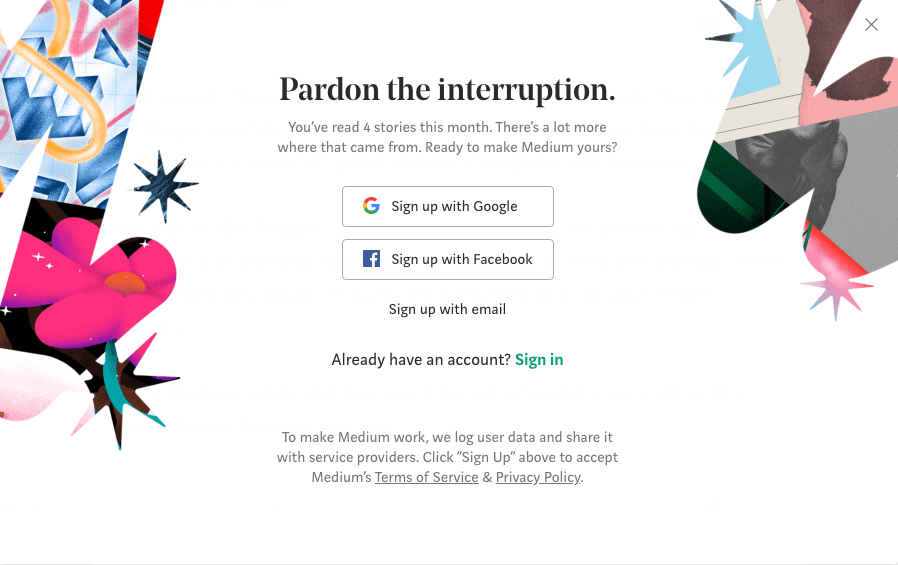
Here’s everything you need to know about Medium, from reasons to give the service a miss, to some of the best ethical alternatives available. 👇
What is Medium?
The brainchild of Evan Williams, who previously co-founded Blogger and Twitter, Medium was envisioned as a place where users could extrapolate on ideas discussed on Twitter, but without being constrained by an enforced character limit.
Users willing to essentially provide free content (as with the majority of Blogger and Twitter users) created a great opportunity to make money with minimal effort.
But what sets it apart from the other blogging platforms available on the internet?
Medium claims that:
“Our sole purpose is to help you find compelling ideas, knowledge, and perspectives. We don’t serve ads—we serve you, the curious reader who loves to learn new things. Medium is home to thousands of independent voices, and we combine humans and technology to find the best reading for you—and filter out the rest.”
It sounds like nonsense, and for the most part, it is. So how does Medium actually work in practice?
After struggling to make a profit despite multiple investment deals (and because there are no adverts on the platform, and data isn’t collected for advertising purposes), Medium eventually chose to monetise by switching to a subscription-based model. For $5 per month, or a $50 yearly fee, membership provides:
- Unlimited, ad-free access to all the stories on Medium
- Its monthly magazine, exclusive columns, and themed collections
- Thousands of audio versions of popular stories
- Curated daily selections from leading publishers and magazines.
Users give up control over design and advertising (Medium essentially allows for no advertising whatsoever, so writers are unable to monetise their content via that method) for a chance to tap into the platform’s modest network of subscribers – a decent payoff, at least if you don’t know the first thing about SEO juice or analytics.
However, a scattershot approach to content creation doesn’t ensure overall quality, since anyone can contribute their own Medium blog. A number of gems can be found among the rough, but you’ll need to be lucky or extremely talented in order to make a breakthrough via this platform.
The Problem with Medium
On the surface, what Medium offers seems like a reasonably good deal; you can write about almost anything you want on their platform (including complaining about Medium). However, it’s far from perfect, and there are a number of valid reasons why it’s not always the standout choice among similar options.
Here are some of the platform’s biggest flaws, and why it might be worth taking a look at some of the others on offer.
1. Unpaid Writers and Publishers Woes

Since they form the backbone of Medium’s content, you’d be forgiven for thinking that writers using the platform must be adequately compensated. Originally conceptualised as a publishing platform first and foremost, with full-time and freelance staff including editors and writers, Medium changed its approach in 2015, as Williams announced:
“Medium is not a publishing tool, it’s a network. A network of ideas that build off each other. And people. And GIFs.”
This resulted in many writers leaving the platform, afraid of missing out on income that could seriously affect their ability to pay the bills. A writer from India noted the hypocrisy of Medium being happy to take his money (in the form of the $5 subscription fee), but being unwilling to pay people not located in the 23 countries that accept Stripe payments – his own included.
Despite writing a “post offering suggestions on how to find a workaround to pay writers outside Medium’s charmed circle”, the situation has not been remedied so far – a shame, considering a large portion of its writers are international.
What payments writers do receive follow a “clap system”: as well as recommending stories to followers, readers can ‘clap’ up to 50 times per post, showing the author their appreciation. Medium says that, “when ranking stories, our system will evaluate claps users give out on an individual basis, assessing their applause for a particular post relative to the number of claps they typically give.”
This confusing system, where some claps are worth more than others, doesn’t always work out well for writers. After all, it can be hard to assess what works and what doesn’t, and you might find yourself beholden to the whims of a couple of readers providing the majority of your income.
Many publishers are no happier, having been sold a pipedream by the platform. When the rug was pulled out from under them they lost the security of guaranteed income, even before Medium cancelled the membership programs of 21 subscription publisher partners in 2018. Presumably it was decided that publications couldn’t offer subscriptions or memberships that would compete with Medium’s own $5-per-month deal.
In essence, Medium would like writers to provide free content – or at least for it to be cheap enough to easily profit from. Once seen as a ‘saviour of journalism’, in the cold light of day Medium is more likely to mess around with the livelihood of writers on the platform, by flitting from model to model, desperately searching for one that works.
Nevertheless, though there are more effective ways to earn money, Medium is far from the worst platform for writers.
2. freeCodeCamp and the Paywall

First off, let’s get past the name. freeCodeCamp is a non-profit that has helped thousands of people to learn to code by providing free articles and videos. Its blog was previously hosted on Medium, before founder Quincy Larson switched over to a self-hosted alternative, saying:
“Medium has shifted to a paywall model where they mainly recommend paywalled articles, then encourage visitors to pay to get around their paywall. At the same time, not much of the traffic to Medium articles comes from Medium itself. Most of it comes from Google and social media.”
If true, this raises a number of questions, primarily: if you blog on their platform, what does Medium actually offer?
In terms of traffic, it’s hard to say without looking at the raw data, but if Larson’s claims are taken at face value, it’s another black mark against Medium as a choice for writers. After all, your content will be monetised, potentially hidden behind a paywall you’ll have no control over; it’s publications and writers that will feel the pinch of lost revenue.
3. Censorship
As with many websites and services, Medium is blocked in a variety of counties due to content published on the platform in the past. China, Egypt, and Malaysia have all limited access at some point, although Malaysia eventually relented after a few years.
The Malaysian ban was put in place after a Medium post alleged that former Prime Minister Najib Razak was attempting to exit the country in the midst of a corruption scandal. The Malaysian Communications and Multimedia Commission (MCMC) issued a takedown notice, to which Medium responded with a request for evidence of laws they’d broken. The MCMC decided to block Medium instead.
If you live in one of the affected regions, you’ll have to resort to using a VPN to have any chance at accessing the website, which isn’t ideal.
Medium doesn’t really enforce censorship in their own right, but they are tough on cryptocurrency writers and publications, perhaps worried that scammers will take the opportunity to hawk their stash of worthless currency.
4. The Overall Experience
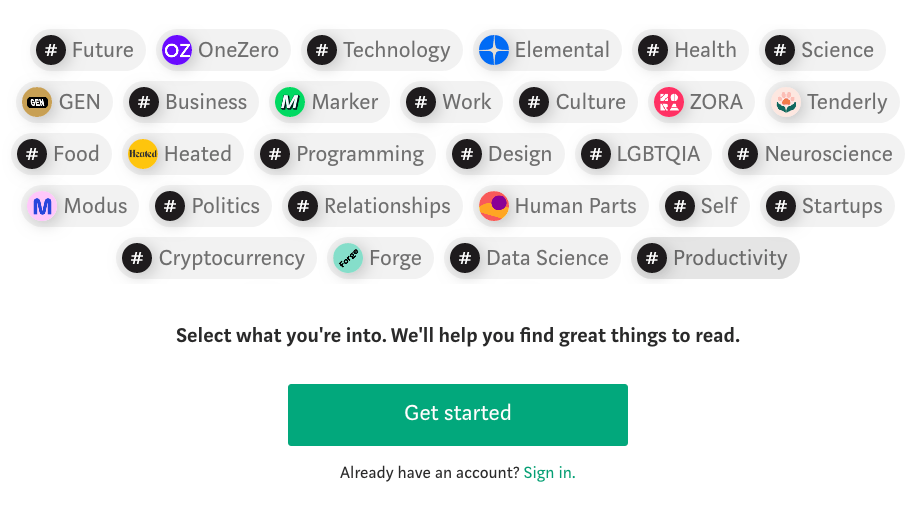
I visit Medium from time to time via search engine results – but almost always close the page on realising what I’ve done. The platform isn’t very usable, and nagging messages constantly bombard the reader with requests to sign up or log in. From a design perspective, there is little reason to sign in, unless you want to follow a specific writer or publication, although the mobile app at least is more functional.
In March 2019, Williams announced that Twitter can be used to bypass the Medium paywall – an obvious effort to drive more traffic to the site, as well as potentially adding more paying subscribers. Of course, since Williams happens to be the co-founder of Twitter, it’s unlikely to have been a difficult deal to cut.
Medium is largely unintuitive, especially when trying to read a linked article. If I wanted to check out their privacy policy on my phone with the app downloaded, Medium wants me to sign in first. After deleting the app, it loads with no issues. (To their credit, Medium promises that they “won’t transfer information about you to third parties for the purpose of providing or facilitating third-party advertising to you.”)
It’s not bad if you want to draft a quick post, but the lack of traditional ads make for a whiny service that always wants you logged in. In 2018, they announced:
“We’ll be restricting some kinds of commercial activity that have been allowed in the past, such as sponsorships and links that are mainly promotional. Medium’s business has been ad-free for more than a year now. But some ‘ad-like’ remnants that had value in the past are now less aligned with Medium’s model of using subscriptions and a metered paywall to provide the best quality user experience. This means eliminating certain features that are superficially free, but for which you pay with attention.”
6. Algorithms
Medium uses an algorithm to calculate earnings – a big deal for writers on the platform, since, with many other tech companies, Medium’s algorithms are a closely guarded secret, meaning writers don’t have much of a clue how much they’ll get paid.
We’ve already discussed the clap system, and the problems that can arise from an unclear payment system. After all, for many users, similar quantities of traffic on different stories do not equate to similar payouts.
For example, at one end of the scale, though some writers may make $2,000 per month from one Medium article, the broader numbers are pretty stark. In June 2019, “55% of writers or publications who wrote at least one story for members earned money.” That sounds pretty good, until you read on and see that just “7.8% of active writers earned over $100.”
On this basis, you’d need to be highly successful to see any financial success. In practice, this means that the majority of writers on the platform are working for almost nothing, while featured writers tend to earn more for commissioned pieces, no matter how many claps the article received.
Another algorithm selects the platform’s Top Stories, though this feature isn’t always clear and understandable. The same goes for Partner Program payments, although Medium clarifies:
“Imagine an author writes about fly fishing. She finds an audience of fly fishing enthusiasts who subscribe to Medium primarily to read her stories, meaning she receives a strong share of reading time from each of her readers. In contrast, a generalist author might receive smaller shares from his readers, who also read a variety of other authors. The fly fisher can earn relatively more through the share calculation, even with a smaller audience.”
Ethical Medium Alternatives
There are hundreds of different blogging platforms available, and I’ve tried my fair share over the years. Luckily, this range of great services means you won’t have to look for long to find ethical alternatives to Medium.
From content management to choosing a custom domain, they all offer something a little different, so take a look and see if there’s one that meets your needs. We’d also welcome any additions to the list!
Plume
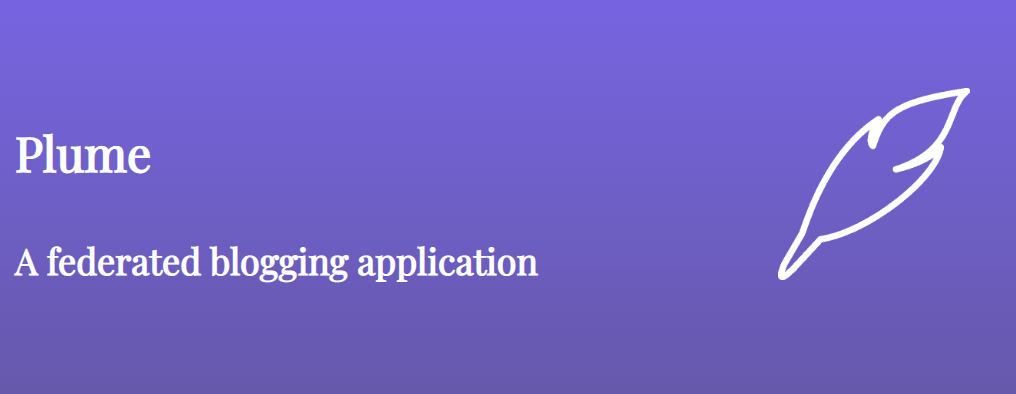
Plume is “not just a single website, but an entire interconnected, yet independent network of what we call instances. You write content from your own instance, but anyone else on any other Plume instance can enjoy your stories too.”
In practice, this works much like any other blogging platform, although Plume’s structure does make it easier to collaborate with others. The ‘instances’ take a bit of getting used to, as they’re hosted and moderated by different people across varied locations – but you can always set up one with your own rules and interests, tailored to your needs.
A network (or ‘Fediverse’) backed mostly by volunteers, as opposed to investors, Plume is a great project to get involved with; the source code is available via GitHub. As an open source project, Plume is always open to help from coders, as well as “user experience designers, people with communication skills, or anybody else who feels like they can offer something to move the project ahead!”
It’s a worthwhile option that doesn’t feed into a corporate machine.
WriteFreely
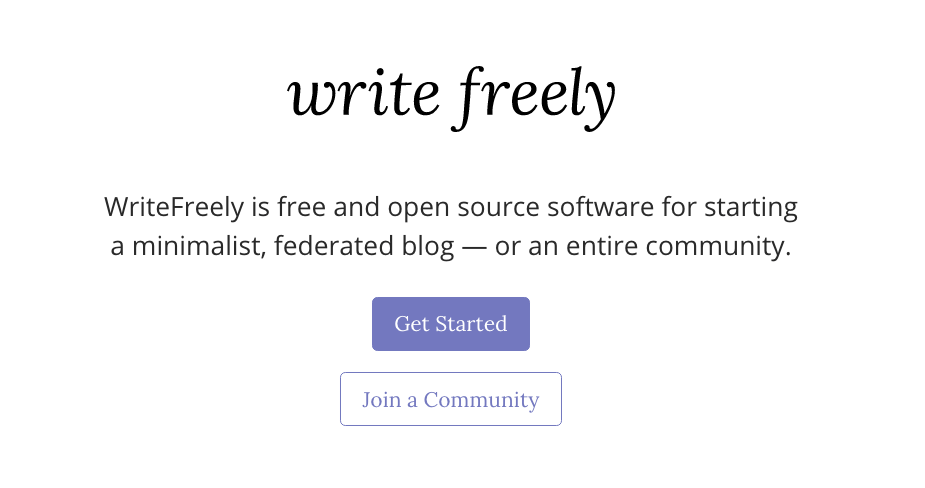
WriteFreely “is free and open source software for starting a minimalist, federated blog — or an entire community.” If you can deal with a slightly pared down experience, this could be the one for you.
Having begun as privacy-focused writing platform Write.as, which allowed anonymously publication, the service soon morphed into WriteFreely following user demand. As a consciously simple blogging platform, WriteFreely prefers to allow your words do the talking.
Using hardly any resources – important if you’re worried about your digital footprint – this is a great option if you don’t want a flashy blog. The website even takes a not-so-subtle shot at Medium:
“There’s no news feed, notifications, or unnecessary likes or claps to take you away from your train of thought. You get a distraction-free writing environment, and readers can enjoy a clean reading experience.”
Squarespace

Website-building platform Squarespace is an incredibly popular option. You can edit your website via their iOS and Android apps, and they offer a free trial if you just want to try it out.
They’re quick to note that their “entire business relies on the same platform and tools our customers pay us for. To that end, we build products and design experiences we would want for ourselves.” It’s easy to monetise a Squarespace blog, and they offer a range of templates, custom CSS, video backgrounds, and lots of additional integration.
There’s no need for any additional plugins as they have good SEO practices, as well as anti-spam features and automatic Google indexing. The same goes for analytics, with everything from visitor insights to search queries catalogued in an easily digestible manner. You’ll also be able to import content from Blogger, WordPress, Tumblr, or Squarespace 5, as well as products from online stores like BigCartel, Shopify, and Etsy. It’s one of the best options, especially if you plan to do the majority of your writing on mobile devices.
WordPress
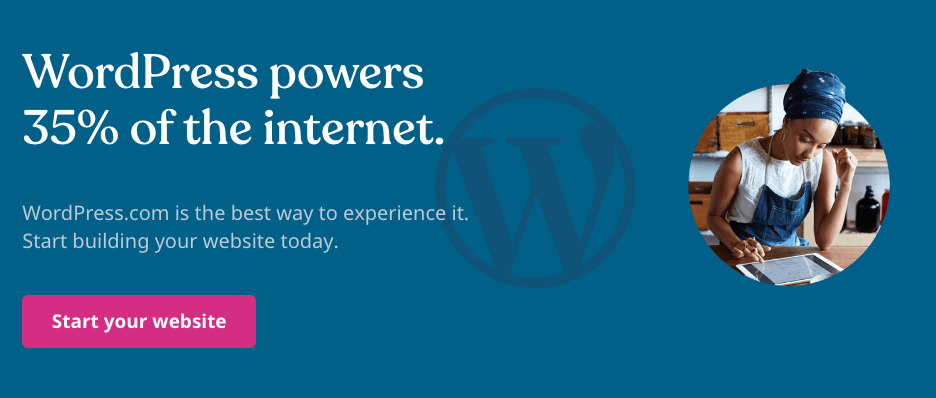
WordPress is probably one of the best known platforms on the web; originally released in 2003, it’s now used by more than 60m websites worldwide. Their user base is enormous: 409 million people view more than 15.5 billion pages each month, and users publish 41.7 million new posts and leave 60.5 million new comments in the same period.
A slight cause for confusion is the difference between wordpress.com and wordpress.org. The former is a stripped down version which allows users to sign up and create a simple blog with no additional costs, whereas wordpress.org is essentially a self-hosted option, with open source software that only requires a domain name and web hosting.
The dot-com version differs in that it’s essentially a hosting service for your website, with a range of different pricing plans. The freemium version works despite many limitations, while the £36 per month dot-org eCommerce option comes with all the bells and whistles imaginable.
Ghost
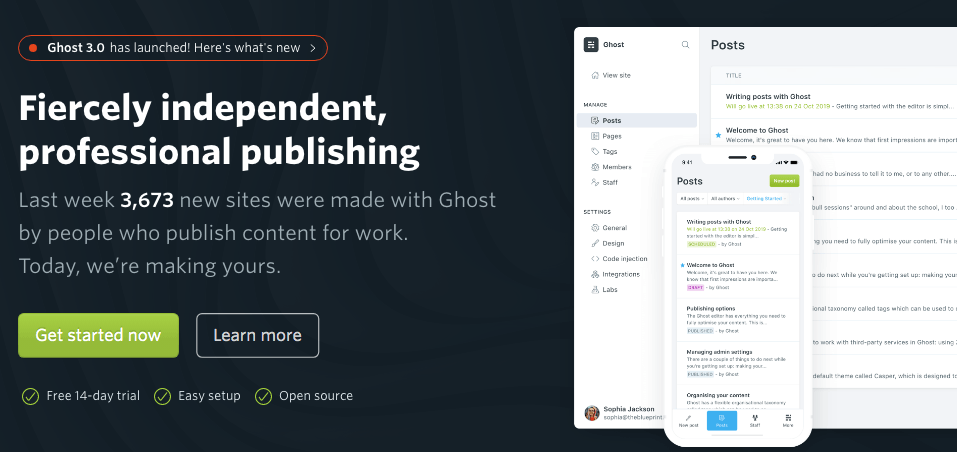
Styled as “the world’s most popular modern open source publishing platform”, Ghost is another great ethical option. In terms of functionality, it offers a range of features for publishers, from memberships to the ability to launch paid content.
Ghost also points out the differences between its service and Medium at every opportunity:
“On Medium, it’s their publication and you’re just writing on it along with everyone else. Using Medium, you don’t own any of the experience and your content will ultimately be promoting Medium itself – not just your own work. It’s much like any other social network. You can’t use your own domain name, you don’t control the design, and your site will be plastered with promotion and advertising to try and lure people into signing up for Medium.”
They have a solid point, and it’s one of the main reasons why I close most Medium posts before they can load properly.
Ghost has inbuilt SEO features, a minimalist editing tool, and integration with a majority of popular apps including YouTube, Slack, and Shopify. Everyone from Tinder to DuckDuckGo has a Ghost blog page, and it’s used by Elon Musk’s OpenAI team to publish their research.
A Personal Website
If you’re planning to write for yourself, it might be better to do so via a self-hosted route. It’s easier to monetise your own blog, and you’ll have full control over everything from the layout to the content, unlike with Medium. You don’t have to be a professional writer to get started! It’s generally pretty cheap, and we have a list of ethical web hosting services you can pick from to make sure everything is above board.
Speaking from experience, it’s better to practice and add portfolio pieces on a website you’ve worked on yourself, instead of strengthening a platform where a select few reap dividends. You can always look to get help from a website builder if necessary, and it’s more professional than a Tumblr page.
If critics are to be believed, it’s not like Medium swings the needle in terms of adding to page-views, and it evidently has little concern for the plight of the average writer on their platform. It might seem daunting, but it’s hard to go wrong with writing for yourself.
Anchor
Anchor, a “super-simple, lightweight blog system, made to let you just write”, is another open source option, with a host of additional features. You’ll have the ability to add custom CSS, JavaScript, and HTML to any blog post or page, and you can create and modify themes if you have a basic knowledge of PHP and HTML/CSS.
They could definitely do with a boost in contributors, as it’s one of the smaller projects on our list by some margin. It’s also worth noting that development has stalled for now – though the nature of open-source means that anyone is able to pick it up and run with it. There is a small presence on their forums if you have any questions, but we’d probably go for one of the other options for now.
Sigle
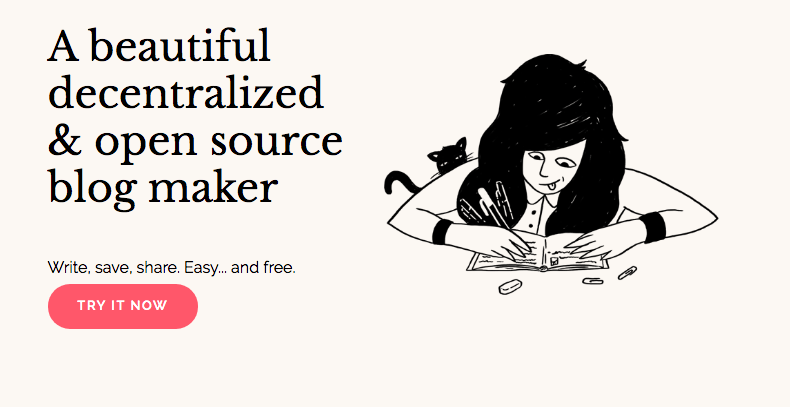
A relatively new option, Sigle is an open source project “created to respond to a passionate community. The goal is to become one of the biggest blog editor apps on blockstack.” Blockstack, a decentralised computing platform that puts users in control of their data and identity, claims apps built on its system “make[s] data breaches and trust violations an antiquated notion.”
Sigle’s use of Blockstack will keep your data safe, and the content you create will be fully decentralised. It’s ideal if you want a minimalist blog, and it’s quick and simple if you’re aiming to get a draft posted ASAP.
Sigle is accessed via the Blockstack browser, although you’ll have to be careful not to forget your password because of the lack of a centralised server as a backup.
Other ethical alternatives to Medium (2020)
Imprint – a social blogging platform focused on content-ownership. You can use a custom domain with your blog, own your content under their policies, freely monetize your own work, and avoid paywalls, while still getting benefits of a built-in community. It’s a hybrid approach between centralized (Medium, Tumblr) and decentralized (WordPress, Ghost) blogging.
This article was updated on July 6, 2020.
Featured photo by Patrick Fore on Unsplash



Leave a Reply